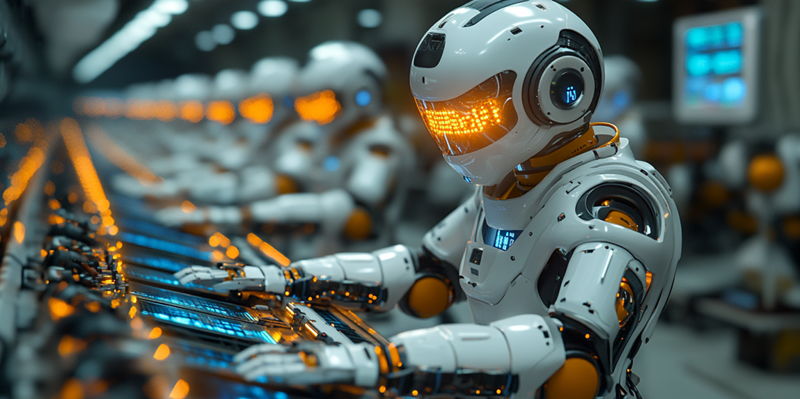The burgeoning interest and potential applications of humanoid robots, particularly within the global labor market, have captured significant attention recently. These robots represent an AI application with substantial commercial potential, with Goldman Sachs projecting a $38 billion market by 2035. One of the main areas of focus for humanoid robots is their use in structured environments, such as manufacturing, where they could offer considerable advantages.
Humanoid Form Factor
The design of humanoid robots has sparked considerable debate among experts. While a human form may not necessarily translate to enhanced functionality, there are compelling reasons for adopting this design. Many environments—homes, stores, and factories—are built to accommodate human dimensions and mobility, suggesting that humanoid robots could navigate and function more efficiently in these spaces. Furthermore, humans are inherently adept at interacting with other humans, making robots designed to look human potentially easier for people to engage with intuitively and naturally.
Manufacturing as a Prime Early Market
The manufacturing sector emerges as an early and ideal market for humanoid robots for several reasons. Manufacturing environments are typically more controlled and predictable than other settings, making them suitable for training robots to perform specific tasks. Additionally, tasks on factory floors often occur in isolation, which further simplifies the training process for robots. This controlled setting makes it easier for humanoid robots to integrate into the workforce, executing repetitive and precise tasks without much variability.
Currently, car manufacturers such as BMW, Mercedes, and Tesla are already testing humanoid robots in their factories, indicating strong industry support for this technology. These trials highlight the significant potential for humanoid robots to improve efficiency and productivity in manufacturing.
Challenges and Trends
One major challenge is the underdeveloped capability of humanoid robots to interact with humans convincingly. While these robots have made strides in performing physical tasks, fluent conversational language and meaningful interaction are still areas needing substantial advancement. Developing interactive humanoid robots demands expertise beyond traditional robotics, requiring knowledge from fields like linguistics, psychology, human-computer interaction, neuroscience, and machine learning.
Unfortunately, these areas of expertise often remain siloed, hindering the development of truly interactive humanoid robots. Bridging these knowledge gaps is crucial to creating robots that can convincingly interact with humans and perform a broader range of tasks.
Summary of Findings
Humanoid robots have a promising future, especially in manufacturing, with projections indicating a potential $38 billion market by 2035. Designing these robots with a human form factor leverages existing human-built environments and enhances the ease of human-robot interaction. The structured and predictable nature of manufacturing facilities makes them particularly suitable for humanoid robots, and major corporations are already investing in and testing this technology. However, significant work remains in enhancing robots’ ability to interact with humans meaningfully. Addressing this requires integrating various academic disciplines into the robotics design process to bridge the gap between physical capabilities and interactive functionalities.
Cohesive Narrative
The exploration of humanoid robots in the context of their application in the industry reveals both immense potential and significant hurdles. While their adoption is projected to transform sectors like manufacturing, their success hinges on overcoming the challenges in human-like interaction. The integration of various academic disciplines into robotics design could unlock new levels of functionality, enabling these machines to work alongside humans more effectively. Ultimately, the future of humanoid robots lies in the balance of leveraging their human form for compatibility and interactions while advancing their interactive capabilities through multidisciplinary collaboration.
Conclusion
Interest in humanoid robots and their potential applications, especially within the global labor market, has been growing recently. These robots exemplify an AI application with tremendous commercial prospects. According to a projection by Goldman Sachs, the market for humanoid robots could reach $38 billion by 2035. This growing market reflects a significant belief in the capabilities and benefits these robots can bring to various industries.
One of the principal areas where humanoid robots could make a considerable impact is in structured environments like manufacturing. In these settings, they can offer significant advantages. For instance, humanoid robots can perform repetitive tasks with high precision, leading to increased efficiency and reduced labor costs. Moreover, they can operate in hazardous conditions, thereby improving workplace safety. While there are challenges in terms of technological development and ethical considerations, the potential for humanoid robots to revolutionize the labor market is substantial. This makes them a critical focus for both businesses and researchers.

